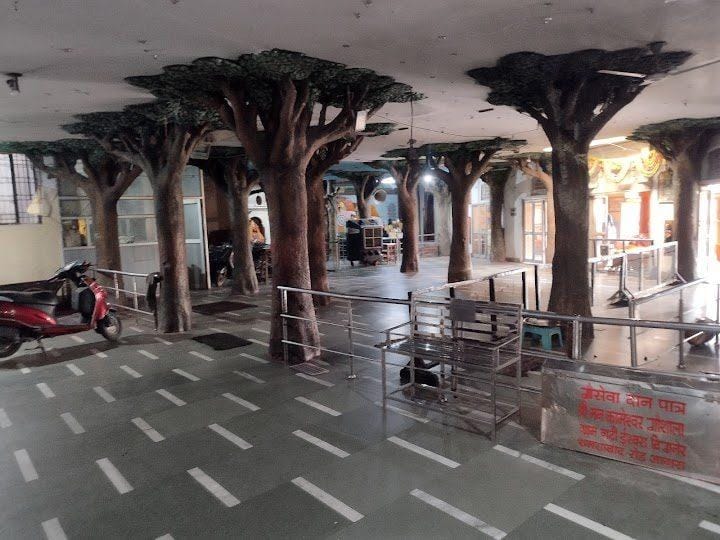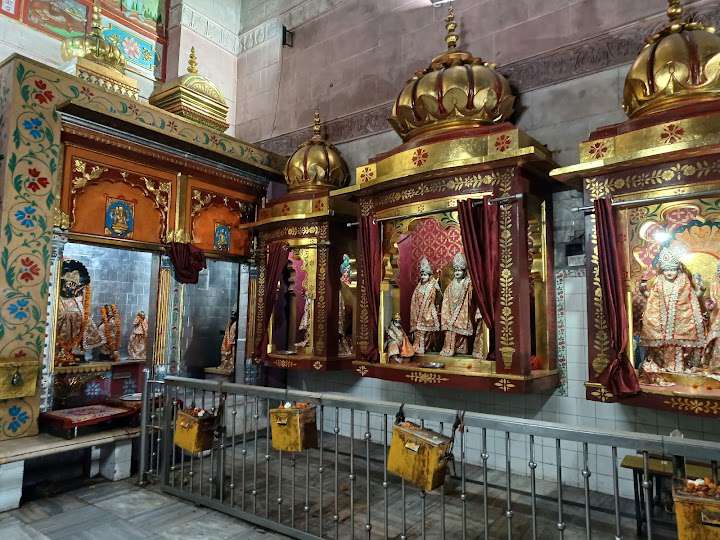Summary
Shri Mankameshwar Temple, one of Agra’s oldest Shiva temples, is believed to date back to the Dwapara Yuga, with Lord Krishna establishing the Shiva Linga here. Devotees visit to fulfill wishes, especially on Shivratri and Sawan Mondays. The temple’s silver-covered Linga and sacred aura make it a revered pilgrimage site.
Location
- Daresi Rd, Rawatpara, Sheb Bazar, Mantola, Agra, Uttar Pradesh 282003
Full Story
Nestled on the banks of the sacred Yamuna River in Agra, the Shri Mankameshwar Temple is one of the city’s most revered and ancient Hindu temples. Dedicated to Lord Shiva, this temple holds immense spiritual, historical, and cultural significance. Let’s delve into the fascinating history and significance of this sacred site.
1. Ancient Origins and Mythological Significance
- Timeless Existence: The Shri Mankameshwar Temple is believed to be one of the oldest temples in Agra, with its origins tracing back to ancient times. While the exact date of its construction is unknown, it is said to have existed since the Satya Yuga (the first epoch in Hindu cosmology).
- Mythological Connection: According to legend, the temple was established by Lord Shiva himself. It is believed that Shiva meditated here, making it a highly sacred site for devotees.
- Name Meaning: The name “Mankameshwar” translates to “the Lord who fulfills desires” (Man = mind, Kameshwar = Lord of desires). Devotees believe that praying here with a pure heart grants their wishes.
2. Architectural Splendor
- Traditional North Indian Style: The temple showcases classic North Indian temple architecture, with intricate carvings, domes, and spires (shikharas) that reflect the rich craftsmanship of ancient India.
- Sacred Sanctum: The main sanctum houses the Shiva Lingam, the symbolic representation of Lord Shiva, which is the focal point of worship.
- Spiritual Atmosphere: The temple complex exudes a serene and divine ambiance, with the sound of bells, chants, and the flowing Yamuna River adding to its spiritual charm.
3. Historical Significance
- Surviving Mughal Rule: During the Mughal era, many Hindu temples were destroyed or repurposed. However, the Shri Mankameshwar Temple managed to survive, possibly due to its deep-rooted significance and the devotion of its followers.
- A Symbol of Resilience: The temple stands as a testament to the enduring faith and resilience of the Hindu community in Agra, even during periods of political and cultural upheaval.
4. Religious and Cultural Importance
- A Major Pilgrimage Site: The temple is one of the most important Shiva temples in North India and attracts thousands of devotees, especially during festivals like Maha Shivaratri, Shravan Mondays, and Navratri.
- Spiritual Practices: Devotees perform rituals such as abhishekam (ritual bathing of the Shiva Lingam with milk, water, and honey), offer bilva leaves, and chant sacred mantras to seek blessings.
- Cultural Hub: The temple is not just a place of worship but also a center for cultural and spiritual activities, including bhajans (devotional songs), kirtans (religious discourses), and community gatherings.
5. The Temple’s Connection to the Yamuna River
- Sacred Location: The temple’s proximity to the Yamuna River adds to its spiritual significance. The river is considered holy in Hinduism, and its waters are believed to purify the soul.
- Ritual Bathing: Devotees often take a dip in the Yamuna before entering the temple, as it is believed to cleanse them of sins and enhance the efficacy of their prayers.
6. Restoration and Preservation
- Modern-Day Efforts: Over the years, the temple has undergone several renovations and restoration efforts to preserve its ancient structure and spiritual essence.
- Community Involvement: The local community and devotees have played a significant role in maintaining the temple’s sanctity and ensuring its upkeep.
7. Why Visit Shri Mankameshwar Temple?
- Spiritual Experience: The temple offers a deeply spiritual and peaceful environment, perfect for meditation and prayer.
- Historical Insight: It provides a glimpse into the rich cultural and religious history of Agra, beyond its Mughal landmarks.
- Architectural Beauty: The temple’s design and craftsmanship are a treat for architecture enthusiasts.
8. Festivals and Celebrations
- Maha Shivaratri: The temple comes alive during Maha Shivaratri, with night-long vigils, special prayers, and a vibrant atmosphere.
- Shravan Month: The holy month of Shravan (July-August) sees a surge in devotees, who observe fasts and offer prayers to Lord Shiva.
- Navratri: During this nine-day festival, the temple hosts special rituals and cultural programs.
Conclusion: A Sacred Jewel of Agra
The Shri Mankameshwar Temple is not just a place of worship but a living testament to Agra’s spiritual and cultural heritage. Its ancient origins, mythological significance, and enduring legacy make it a must-visit destination for devotees, history enthusiasts, and spiritual seekers alike. Whether you’re drawn by faith, history, or the temple’s serene ambiance, a visit to Shri Mankameshwar Temple is sure to leave you enriched and inspired.












































Reviews
There are no reviews yet.